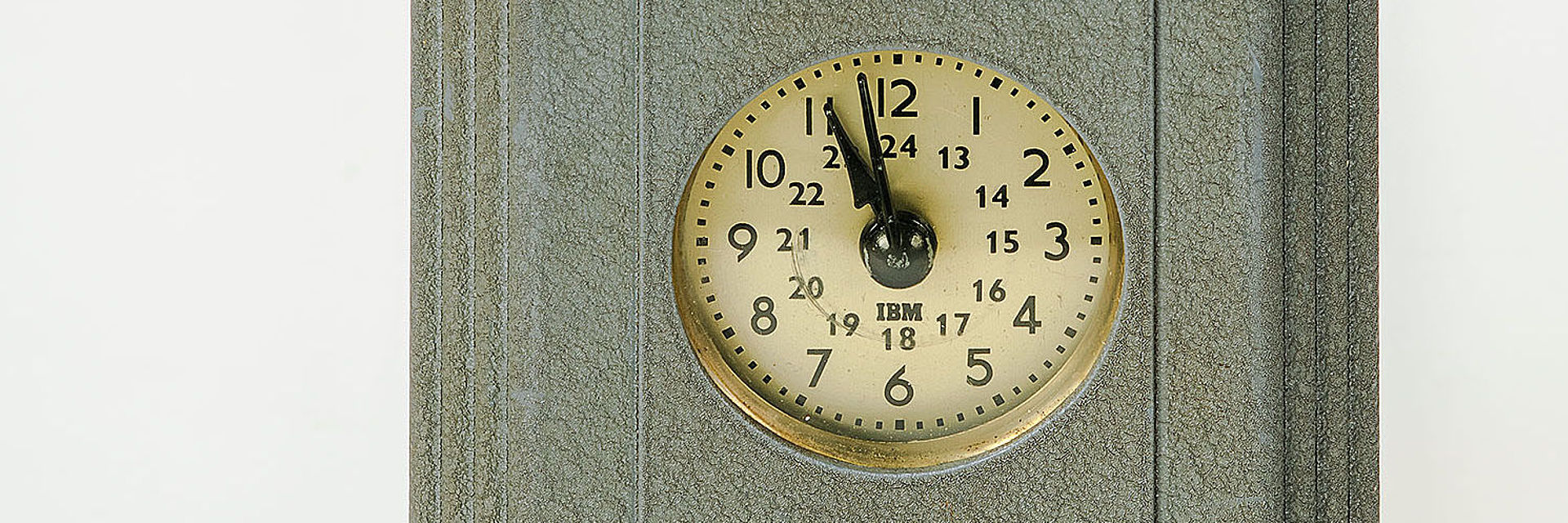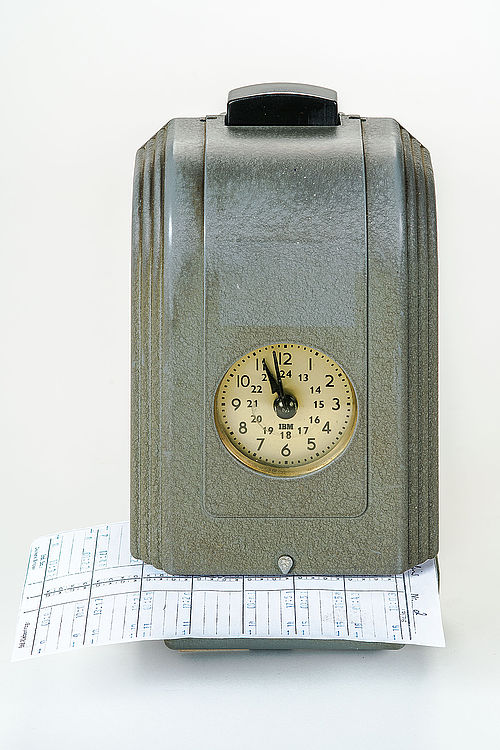
IBM Model 780 Time Clock, circa 1950
Object of the month January 2021

SDTB / C. Kirchner
The Walter Weissig GmbH moved into the second rear courtyard of 34 Obentrautstraße in Berlin-Kreuzberg in 1949. The time clock on display here was installed at the entryway shortly thereafter. The time cards needed for restocking each month could at first be easily reordered but eventually their production was discontinued. One last card was consequently scanned to make a digital copy and reprinted over and over again. Although the technology of time recording had become progressively better, the clock was used until the company moved at the end of September 2020.
The company was founded in Kreuzberg by the master turner Wilhelm Weissig in 1918. It initially produced jewelry and components for the broadcasting industry made from ivory, synthetic resin and early plastics such as galalith (milk stone) or Trolit (cellulose acetate). In 1953 the family business decided to concentrate on the processing of plastics exclusively. They mainly manufactured pieces based on technical drawings from customers such as medical and scientific institutions as well as architects, museums and artists.
One of the company’s most famous projects was the sculpture „Sky Piece“ by the artist David Black. It was on display in the Neue Nationalgalerie’s sculpture garden from 1972 to 1979. In order to display it again at its original location after the current renovation of the Neue Nationalgalerie is complete, it must now be completely restored. Therefore the piece's conservators have reestablished contact with the Walter Weissig GmbH as part of their work.
